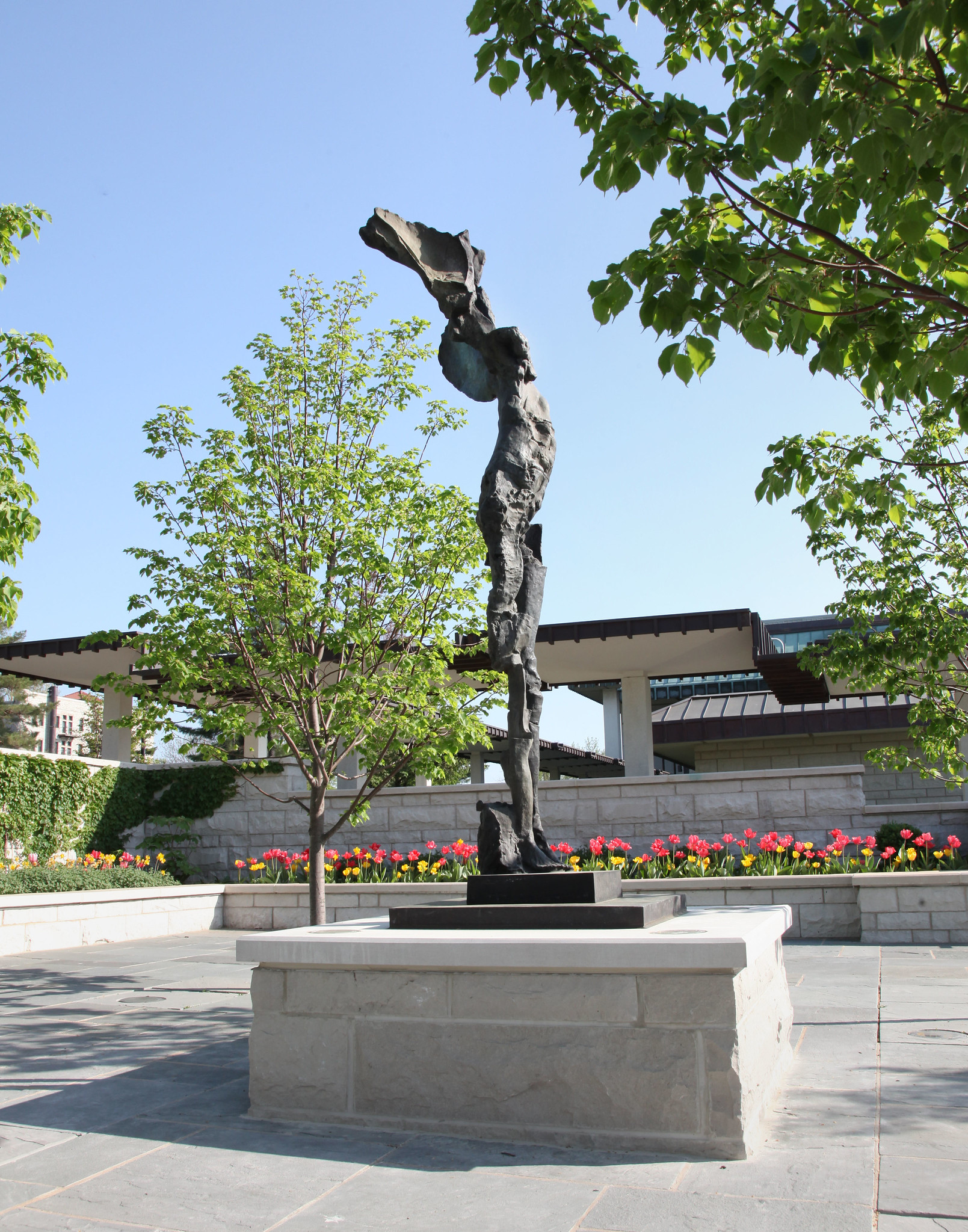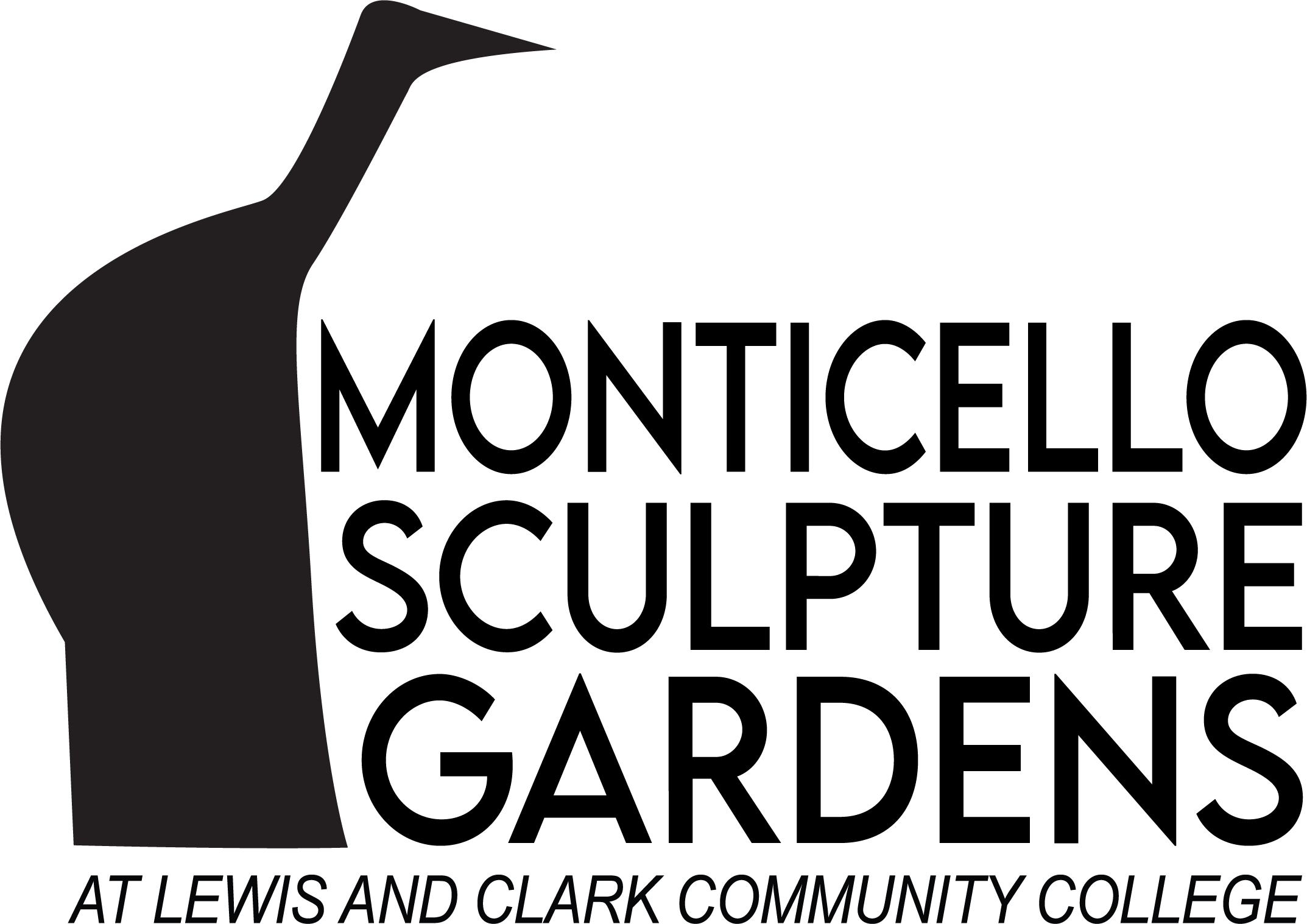Dedicated 2012
 With the 2012 placement of "Winged Figure Ascending" in the Monticello Sculpture Gardens, the internationally recognized West Coast sculptor Stephen De Staebler returned in spirit to the Saint Louis area. Born on March 24, 1933, in the Saint Louis suburb of Webster Groves, De Staebler spent much of his early childhood in the nearby suburb of Kirkwood, Missouri.
With the 2012 placement of "Winged Figure Ascending" in the Monticello Sculpture Gardens, the internationally recognized West Coast sculptor Stephen De Staebler returned in spirit to the Saint Louis area. Born on March 24, 1933, in the Saint Louis suburb of Webster Groves, De Staebler spent much of his early childhood in the nearby suburb of Kirkwood, Missouri.
Something of an artistic prodigy as a child, his father met with the Director of the St. Louis Art Museum to investigate the possibilities of art instructions for eight year old Stephen De Staebler. Reportedly, while at the museum De Staebler was struck by the image of the bronze sculpture, "Laocoon and His Sons," casting an indelible impression on the young artist. After studying at Black Mountain College and taking the “Grand Tour” of the great cultural sites of Italy, France and England, De Staebler graduated magna cum laude in theology at Princeton in 1954.
De Staebler moved to the west coast in 1958 where he was among the first students of the abstract ceramic artist Peter Voulkos at the University of California, Berkeley. De Staebler was an independent spirit. In a career that saw him break away from the abstract ceramic influence of Voulkos and go against the abstract art movement of the time, De Staebler charted his own course as a figurative sculptor.
Ever exploring the malleable and expressive qualities of clay, De Staebler became a master craftsman in ceramics. In the studio, he would mold and manipulate sculptural forms spontaneously cutting away and adding clay, making casts with imprints of torsos, legs and feet and perfecting a multitude of earthen tonalities of colors through powdered metal oxides mixed directly into the raw unfired clay.
Like Peter Voulkos who broke his ceramic vessels to make clay sculptures, De Staebler also worked with his own fractured elements. His were broken ceramic remnants of his figurative work that were later reassembled with pieces of dissimilar origins.
For more than four decades, De Staebler had been burying fragments of these ceramic body parts on a hill behind his studio in Oakland overlooking the San Francisco Bay. Collectively, over the years, these fragmented ceramic pieces took on the crumbled, broken and naturally worn finish of antiquities that might have been discovered at an archeological site.
De Staebler made ceramic totemic imagery from these fragmented castings of body parts. He would unearth elements of earlier work and incorporate the ceramic fragments in his most current sculpture. Stacked like the stone drums that formed the columns of the Parthenon, dissimilar elements came together through De Staebler’s hand as logical, authoritative and unforgettable totemic assemblages. His spontaneous fabrication process allowed him to maintain the vitality in his work as he made the transition from ceramics to bronze.
De Staebler’s assemblages recalled the colossal totemic effigies of the Sumerians and Egyptians. He was particularly moved by Pharaoh Rameses’ temples carved out of solid rock reconstructed in the mid 1960s atop cliffs 200 feet above the flooded Nile.
Every detail of De Staebler’s work, however, spoke to his unique vision as a sculptor. His visual acuity focused on every structural and surface detail, defining the shapes and shadows between each joint, controlling the varied texture on each surface, connecting the interlocking element and manipulated the mottled earthen patinas on his ceramic and bronze sculptures as he stack laminated his iconic figures.
In creating a very personal statement, De Staebler reinvented the representational tradition of sculpture. His ability to reference historic relics of archeological digs and synthesize those elements with the most current concepts of contemporary sculpture gave his figurative artwork a timeless quality. One of the last bronze sculptures created prior to his death in 2011, the nine foot tall bronze sculpture Winged Figure Ascending is a commanding testament to De Staebler’s unique and immediately recognizable approach to figurative sculpture.


